Some people prefer to spend the winter at home, while others enjoy participating in various winter activities to celebrate the white season. The same goes for people with visual impairments. This article aims to explore some interesting winter activities for visually impaired people to enhance their experiences while reducing the visual challenges that winter brings.
Winter Challenges for People with Low Vision
The winter season poses unique challenges for individuals with low vision. The cold and dry weather characteristic of this time of year can make the increased eye discomfort for those with visual impairments. Harsh weather conditions, including freezing temperatures and biting winds, can exacerbate existing eye sensitivities. In this case, it’s crucial for people with low vision to take extra precautions to protect their eyes from the elements.
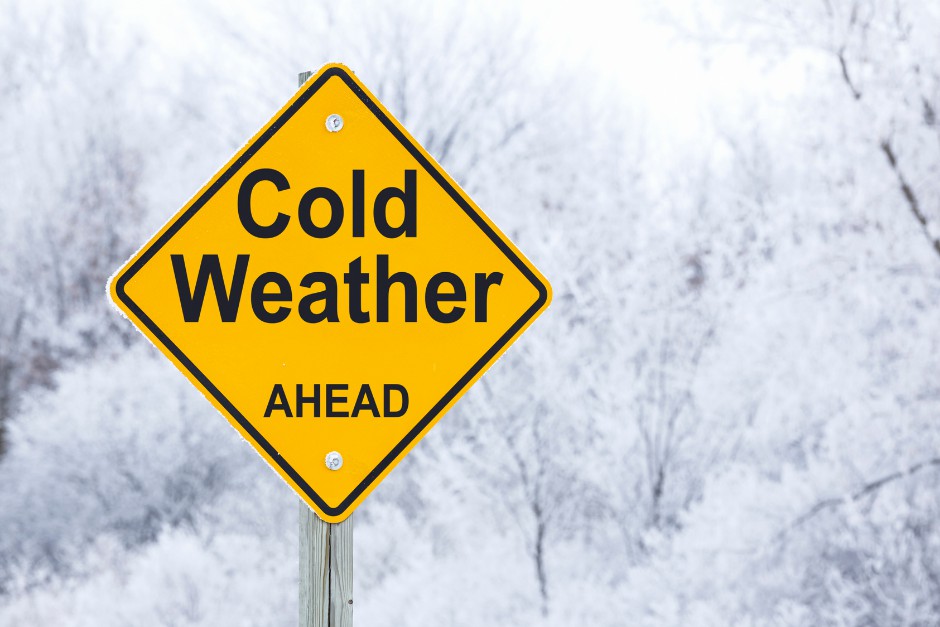 Moreover, the extreme winter weather also presents obstacles to mobility. Icy sidewalks and snow-covered paths can make navigating the surroundings more challenging, and pose potential hazards for those with limited vision. The risk of slips and falls always increases during winter, which necessitates more careful navigation. In some cases, assistance from guide animals or mobility aids is necessary as well for low vision individuals.
Moreover, the extreme winter weather also presents obstacles to mobility. Icy sidewalks and snow-covered paths can make navigating the surroundings more challenging, and pose potential hazards for those with limited vision. The risk of slips and falls always increases during winter, which necessitates more careful navigation. In some cases, assistance from guide animals or mobility aids is necessary as well for low vision individuals.
In addition to the above challenges, one of the notable challenges for visually impaired people is the inadequate lighting. With shorter daylight hours and often overcast skies, insufficient illumination becomes a concern. For those with vision loss, proper lighting is vital for their daily activities, and the lack of adequate light during winter can impact their routine tasks. Considering these diverse challenges, it becomes evident that winter brings multiple difficulties for low vision people, which makes comprehensive support important in recommending suitable winter activities.
Winter Activities Recommendation for the Low Vision
For individuals with low vision, engaging in winter activities can be both enjoyable and empowering. Consider the following recommendations tailored to accommodate their needs:
Winter Nature Walks:
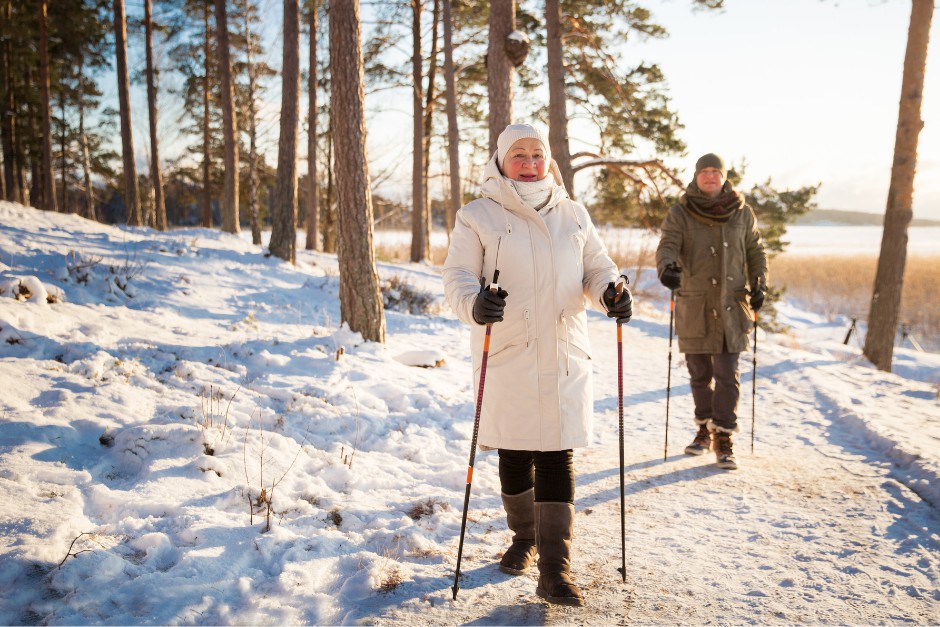 Winter nature walks can provide a multi-sensory experience for people with low vision. Encouraging them to explore natural settings during the winter months can involve incorporating various sensory elements. Guides or companions can describe the surroundings in vivid detail, emphasizing the unique textures of snow, and the sounds of wildlife. Tactile maps or audio guides may also be used to enhance their understanding of the environment, making these walks not only a visual but a holistic sensory experience.
Winter nature walks can provide a multi-sensory experience for people with low vision. Encouraging them to explore natural settings during the winter months can involve incorporating various sensory elements. Guides or companions can describe the surroundings in vivid detail, emphasizing the unique textures of snow, and the sounds of wildlife. Tactile maps or audio guides may also be used to enhance their understanding of the environment, making these walks not only a visual but a holistic sensory experience.
Winter Bird Observation:
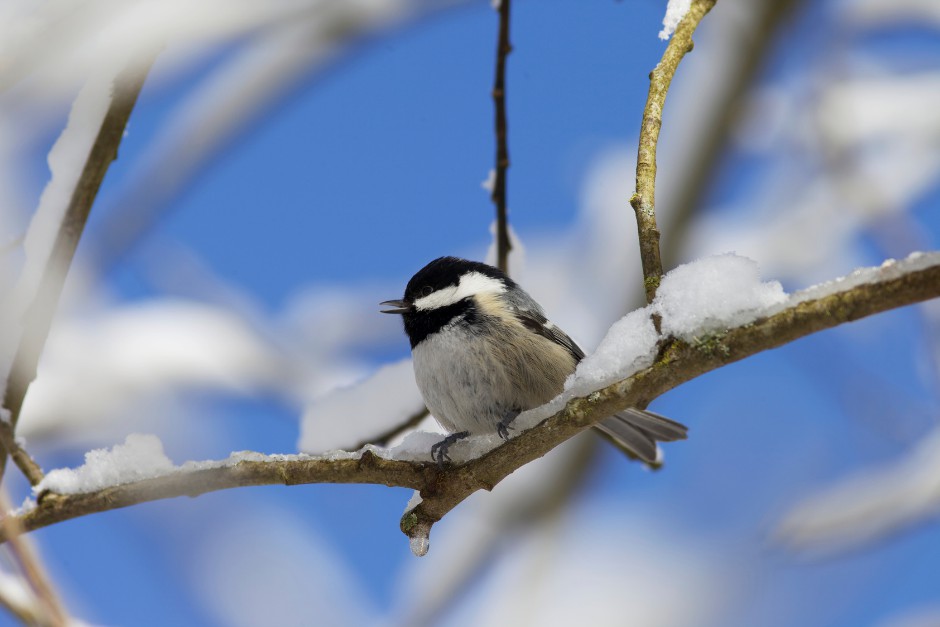 Birdwatching takes on a magical quality in winter, with the contrast between snow and the vibrant plumage of birds becoming a visual spectacle. For those with visual impairments, enhancing this experience can involve utilizing auditory cues and descriptive materials. Audio guides that highlight distinct bird calls, coupled with tactile representations of various bird species, create an inclusive birdwatching experience. Also, designated birding stations can be equipped with features such as Braille labels or tactile markers for visually impaired visitors to aid identification, which makes this winter activity both educational and immersive.
Birdwatching takes on a magical quality in winter, with the contrast between snow and the vibrant plumage of birds becoming a visual spectacle. For those with visual impairments, enhancing this experience can involve utilizing auditory cues and descriptive materials. Audio guides that highlight distinct bird calls, coupled with tactile representations of various bird species, create an inclusive birdwatching experience. Also, designated birding stations can be equipped with features such as Braille labels or tactile markers for visually impaired visitors to aid identification, which makes this winter activity both educational and immersive.
Ice Fishing:
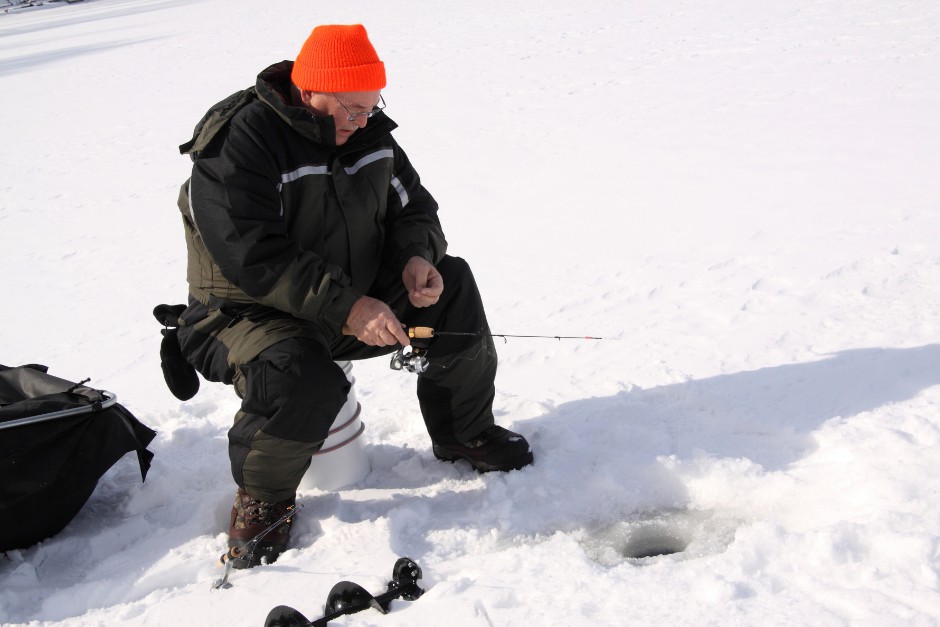 Adapting ice fishing for low vision people needs to make the activity more accessible through tactile tools and thoughtful design. Tactile fishing equipment, including rods and bait, ensures a hands-on experience. Incorporating audio cues or guides can assist in navigating the ice fishing environment for those with vision loss. Meanwhile, establishing a supportive and inclusive atmosphere around the fishing area, with clear communication and assistance, contributes to a positive and enjoyable ice fishing experience. Additionally, it’s also possible to expand social circles for visually impaired people through this activity, contributing to their overall well-being.
Adapting ice fishing for low vision people needs to make the activity more accessible through tactile tools and thoughtful design. Tactile fishing equipment, including rods and bait, ensures a hands-on experience. Incorporating audio cues or guides can assist in navigating the ice fishing environment for those with vision loss. Meanwhile, establishing a supportive and inclusive atmosphere around the fishing area, with clear communication and assistance, contributes to a positive and enjoyable ice fishing experience. Additionally, it’s also possible to expand social circles for visually impaired people through this activity, contributing to their overall well-being.
Indoor Activities like Yoga:
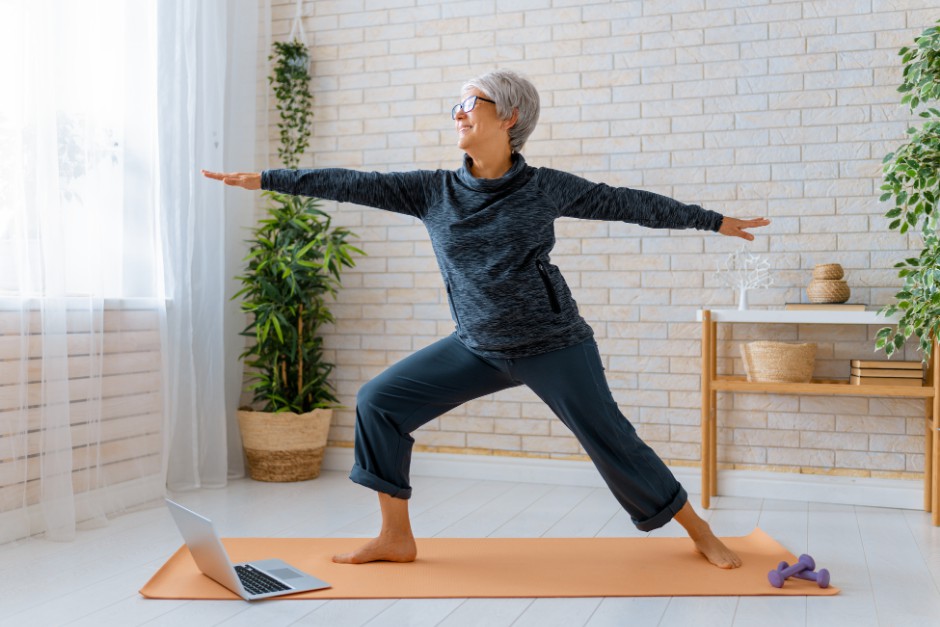 For some people, winter weather can make outdoor activities challenging, but indoor options like yoga offer a welcoming alternative. Customized yoga sessions incorporating verbal cues and descriptive instructions enable visually impaired individuals to actively engage. The key point of indoor activities for the visually impaired is to ensure that participants have access to proper instructions to enhance their experiences. Taking into account various abilities and comfort levels, indoor activities like yoga can be adaptable and enjoyable for individuals with visual impairments.
For some people, winter weather can make outdoor activities challenging, but indoor options like yoga offer a welcoming alternative. Customized yoga sessions incorporating verbal cues and descriptive instructions enable visually impaired individuals to actively engage. The key point of indoor activities for the visually impaired is to ensure that participants have access to proper instructions to enhance their experiences. Taking into account various abilities and comfort levels, indoor activities like yoga can be adaptable and enjoyable for individuals with visual impairments.
Winter Cooking Classes:
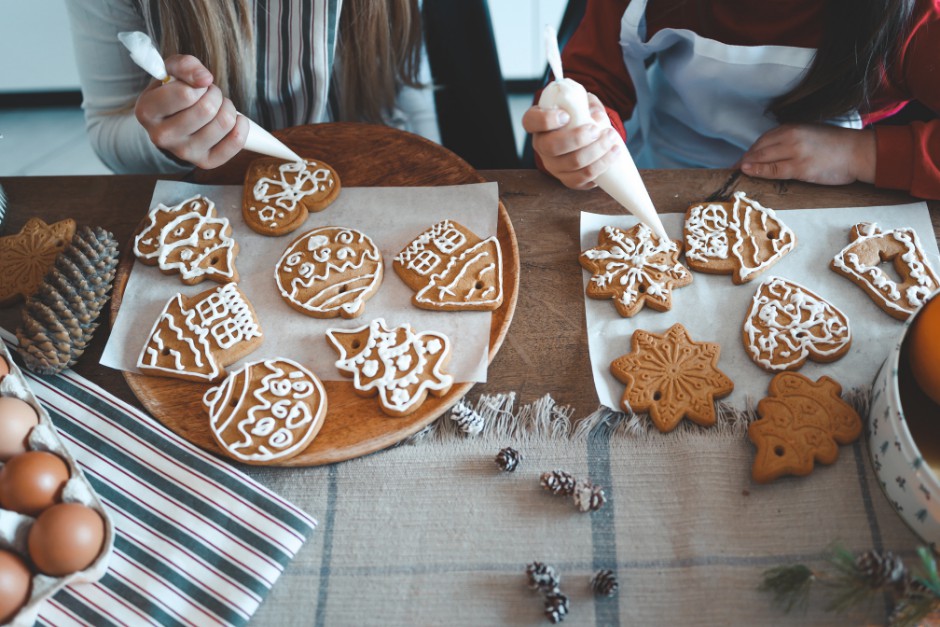 Cooking can add some warmth during the cold winter months. Delve into the world of culinary with winter-themed cooking classes designed for accessibility, and visually impaired people can enjoy this indoor activity with their loved ones. These sessions not only provide a delightful indoor activity but also offer a hands-on experience in the kitchen. Accessible recipe materials, tactile cooking tools, and a supportive kitchen environment ensure that people with visual impairments can actively engage in creating delicious winter dishes.
Cooking can add some warmth during the cold winter months. Delve into the world of culinary with winter-themed cooking classes designed for accessibility, and visually impaired people can enjoy this indoor activity with their loved ones. These sessions not only provide a delightful indoor activity but also offer a hands-on experience in the kitchen. Accessible recipe materials, tactile cooking tools, and a supportive kitchen environment ensure that people with visual impairments can actively engage in creating delicious winter dishes.
Winter Gardening or Indoor Plant Care:
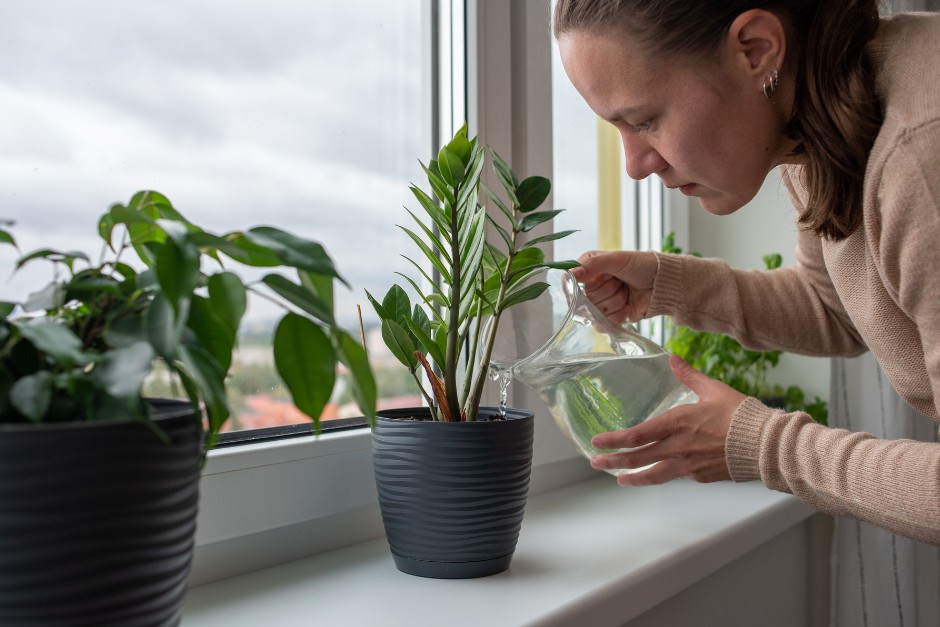 For those who like nature but prefer indoor pursuits during winter, winter gardening or caring for indoor plants are highly recommended. With tactile gardening tools, aromatic plants, and accessible plant care instructions, nature-loving visually impaired people can find their way to spend the cold season. This activity connects individuals with the nurturing aspects of nature, which allows them to create a sensory-rich indoor garden, bringing the beauty of the outdoors inside during the colder months.
For those who like nature but prefer indoor pursuits during winter, winter gardening or caring for indoor plants are highly recommended. With tactile gardening tools, aromatic plants, and accessible plant care instructions, nature-loving visually impaired people can find their way to spend the cold season. This activity connects individuals with the nurturing aspects of nature, which allows them to create a sensory-rich indoor garden, bringing the beauty of the outdoors inside during the colder months.
These winter activity recommendations aim to foster inclusivity, allowing people with low vision to participate in and enjoy the seasonal festivities. By adapting these activities to their unique needs, we can create enriching experiences that contribute to a sense of empowerment and connection with the winter season.
Winter Safety Tips and Eye Care
Winter safety and eye care are paramount for individuals, especially for those with visual impairments. Implementing these tips ensures a safer and healthier experience in winter:
- Navigation Tools
Utilizing effective navigation tools such as walking sticks when moving outdoors become one of the most crucial tips for those with low vision. In winter, uneven surfaces, icy paths, and snow-covered walkways can all bring challenges for them. Walking sticks provide stability and aid in detecting potential obstacles, which enhances overall mobility and reduces the risk of slips or falls.
- Outdoor Equipment
For outdoor activities, please ensure you have the necessary equipment to navigate winter conditions. This may include sturdy footwear with good traction for icy surfaces, adaptive gear for winter sports, assistive technologies for vision loss, and any mobility aids essential for your specific needs. Being well-prepared enhances safety and enables a more enjoyable participation in outdoor winter activities.
- Dressing for Winter Health
The health of visually impaired people should be taken more care of in winter season. Wear appropriate and layered clothing to protect yourself from the cold. Multiple layers help retain body heat, and waterproof outer layers keeps out snow and moisture. Additionally, don’t forget to cover your limbs with gloves, hats, and scarves to prevent frostbite. Maintaining a warm body temperature is fundamental for overall health during winter.
- Eye Care
For those with visual impairments, their eyes may be more sensitive and uncomfortable in cold weather. Therefore, their eye health should be taken more into account. Use eye drops regularly to combat dryness caused by cold and windy weather, as directed by the eye doctors. Additionally, wearing sunglasses with UV protection can protect your eyes from harmful UV rays, even in winter. As snow can reflect sunlight, increases the impact on the eyes, so proper eye protection is crucial to prevent discomfort and potential damage.
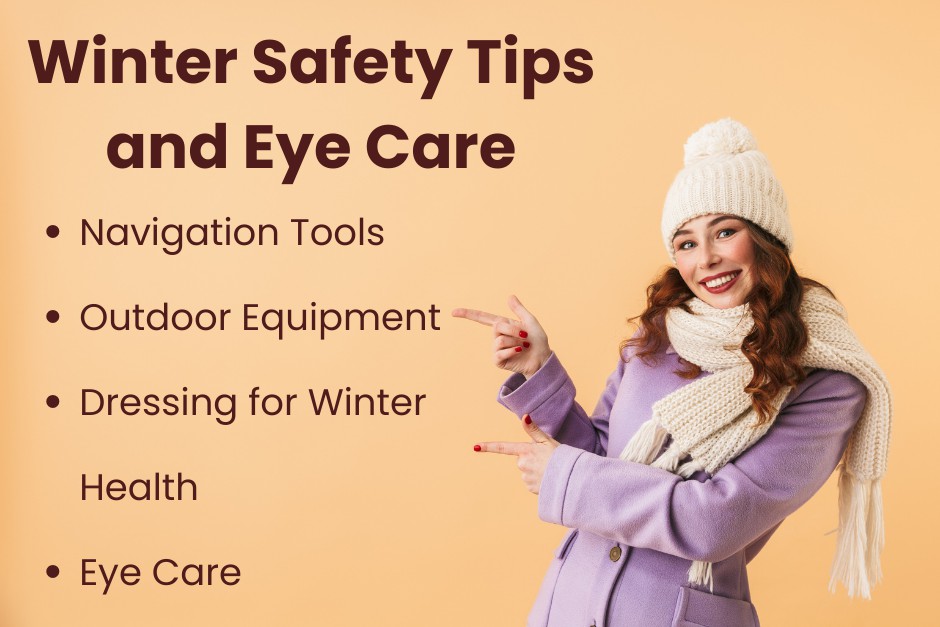
By incorporating these safety tips and eye care practices into winter routines, visually impaired people are able to have a great winter. Whether navigating outdoor places or participating in indoor winter activities, prioritizing safety and eye health ensures those with visual impairments can fully enjoy the winter season.

